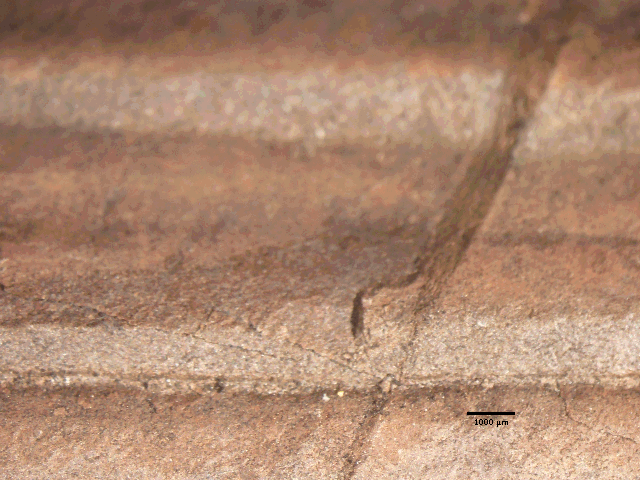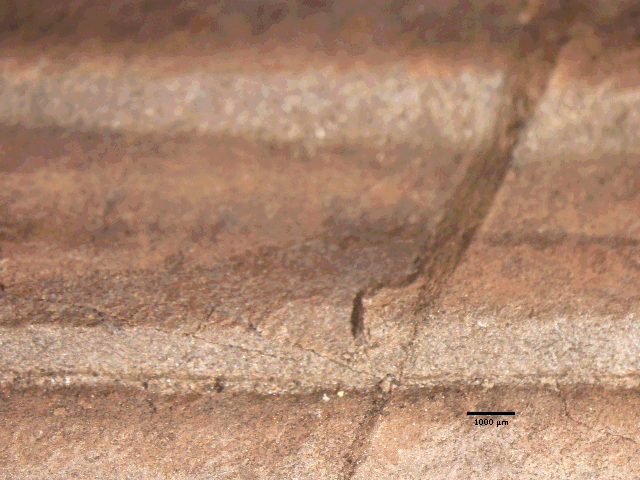More of the new scientific medium* I showed you on Wednesday: animated GIFs of super-small stuff, to give a sense of depth. This time, I included a 1 mm scale bar:

These are laminations of silt and clay in the rhythmites of the lower Konnarock Formation.
If the above image moves too fast for your eye to keep up with, here’s another version of it, which is set to a slower tempo:

The diagonal brown stripe is a tension gash of sorts — more details on that in the days to come.
I think this could be really useful technology for conveying a sense of focal depth via the Internet. What about doing something similar for thin section petrography, to convey the relief of different mineral species?
I find it interesting that the field of view changes slightly when the focus is adjusted — does this imply my microscope is somehow off-kilter or mis-aligned? If you’re more into microscopy than I am, I’d love to hear your assessment.
* Okay, it’s not really “new.” But why isn’t this medium used more for science? Why are animated GIFs more typically associated with slapstick cat videos?

Most geologists aren’t inclined to go anywhere near a computer other than to check email, write the odd script or type into Word to draft papers, much less use it as a teaching tool. I don’t expect them to make animated GIFs of anything.
What program do you use to make the GIFs? Also, perhaps you can bring it up at the AGU blogging workshop?
It’s called unFREEz! A great, simple little program that is FREE as the middle of its name implies.
The lateral movement definitely suggests a misalignment of the scope, but it’s a neat effect. I initially thought you might have taken these with the GigaPan unit and a macro camera setup, which would have explained the offset between sequential photos, though the focus variation would have had to have been done manually.
I was focusing manually for sure. Don’t have the Gigapan set up yet. Soon… 🙂
There a few movies moving things up & down on the stage to show relief & Becke line in plane light from a few of the mineralogy textbooks. Do you have a copy of the Dyar, Gunter & Tasa (2008) Mineralogy textbook? (http://www.minsocam.org/MSA/DGTtxt/) It has an accompanying DVD that has several animations of that ilk. I currently can’t find my copy of the DVD or I would share… (this is the problem with moving).
DVDs are physical objects that get lost. I’d like to see more of this stuff online, free to access, for anyone who wants to learn, or answer a question with observations of a rock unit facilitated via the internet.
No, I don’t have a copy of the book — but I appreciate the suggestion. If you find a copy let me know!
C